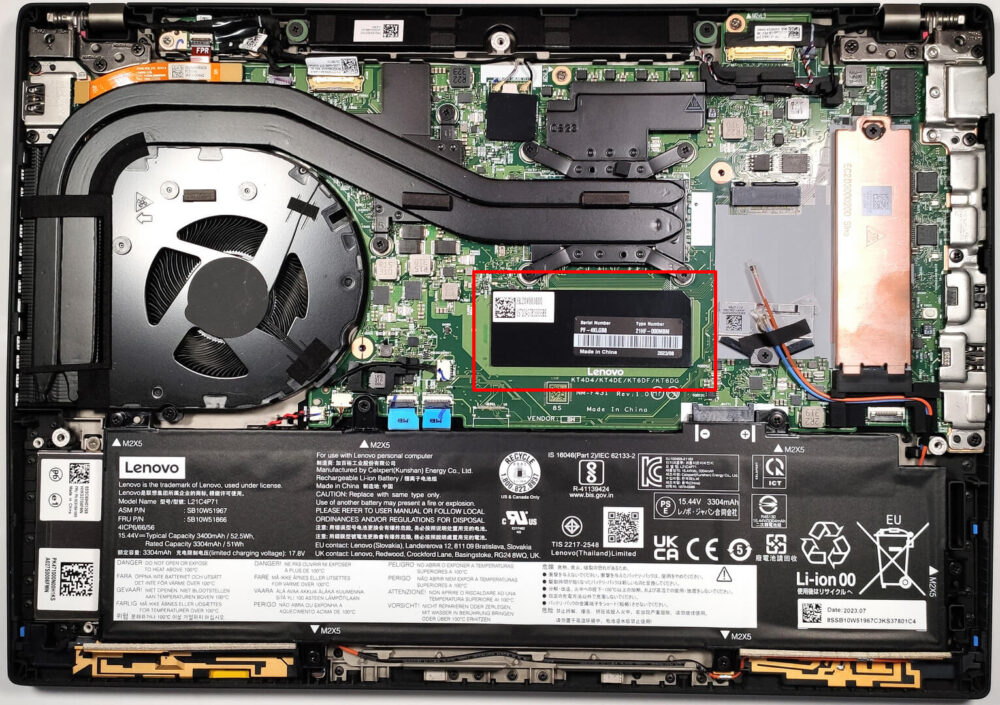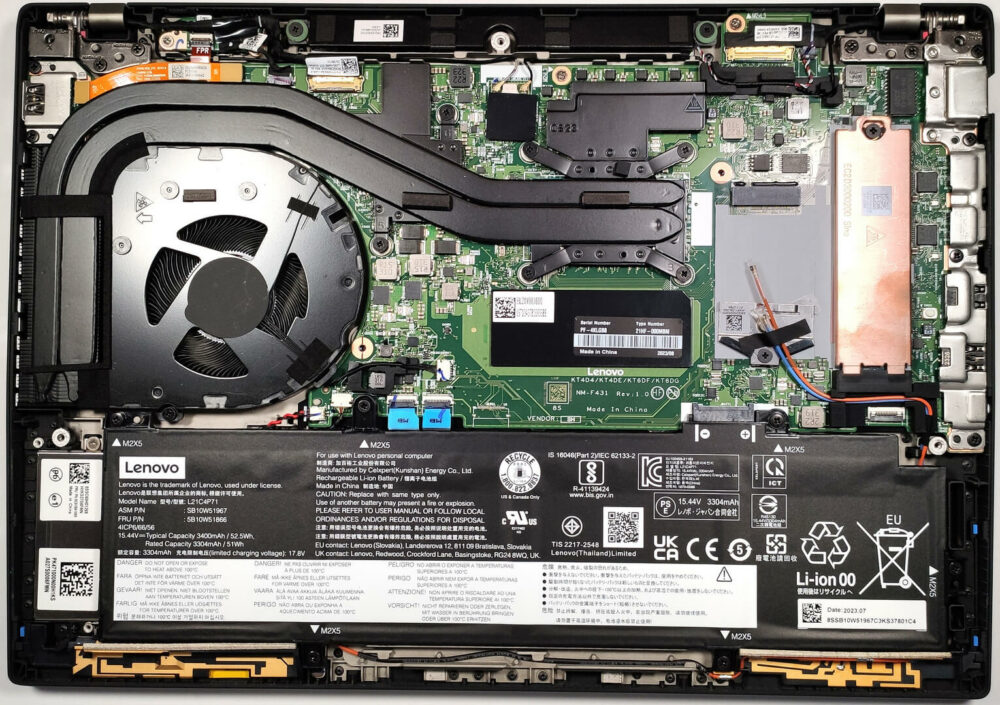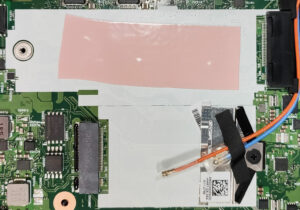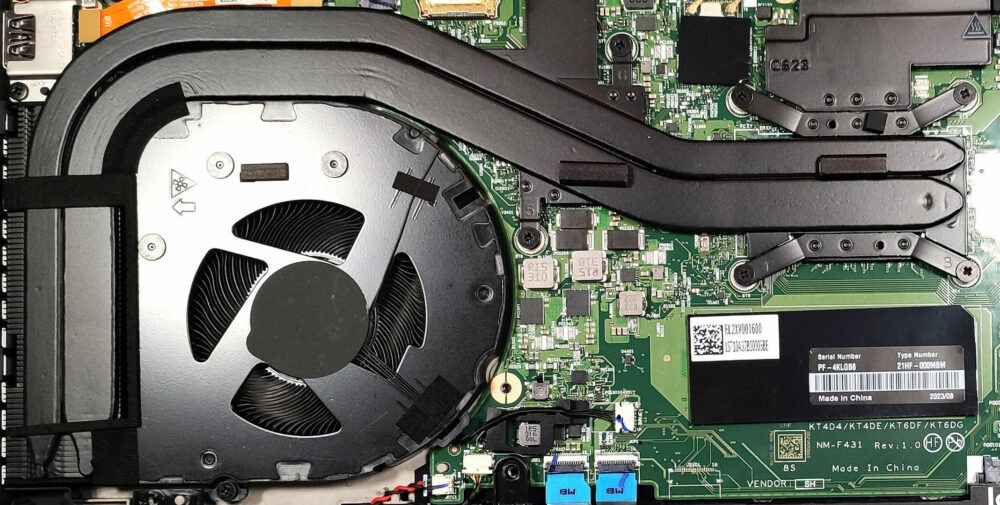How to open Lenovo ThinkPad P14s Gen 4 – disassembly and upgrade options
Step 1: Accessing the Internal Components
- Ensure the Lenovo ThinkPad P14s Gen 4 is powered off and placed on a soft, clean surface to prevent scratches or damage.
- Unscrew the seven captive Phillips-head screws from the bottom of the laptop.
- Use a plastic tool to gently pry the bottom panel off, starting from one of the top two corners.
Hint: Be careful during this process to avoid damaging the internal clips or the laptop casing.
Step 2: Removing the Battery
- Wear gloves to safely handle the built-in battery connector and avoid any potential short-circuiting.
- Undo the 6 Phillips-head screws holding the battery in place, then carefully remove the optional 52.5Wh battery from the laptop.
Caution: Handle the battery and its connector with care to avoid any damage.
More info: The optional 52.5Wh battery provides up to 9 hours and 5 minutes of web browsing or 6 hours and 40 minutes of video playback, offering a solid battery life for productivity.
Memory Configuration
Depending on the model, the Lenovo ThinkPad P14s Gen 4 comes with either soldered-only memory up to 64GB of LPDDR5x-7500MHz (operating at 4800MHz due to platform limitations), or a combination of 16GB soldered memory and a SODIMM slot that supports an additional DDR5-5600MHz stick (operating at 5200MHz), for a total of up to 48GB.

Storage Upgrade
- Identify the M.2 slot compatible with Gen 4 SSDs for storage upgrades. Consider installing a new NVMe SSD to enhance the laptop’s storage capacity and performance.
- The NVMe SSD benefits from additional cooling provided by a metal shroud with a thermal pad on the inside, as well as another thermal pad placed on the mainboard beneath the SSD.
- Choose and purchase a new drive when needed. Don’t forget to check out our Top M.2 SSDs Performance Rankings.
You can buy Gen 4 M.2 SSD modules here: Buy from Amazon.com (#CommissionsEarned)
Examining the Cooling System
Inspect the cooling system, which includes two heat pipes shared between the CPU and the GPU, one heatsink, a single fan, and a couple of heat spreaders, designed to efficiently manage the thermal output of the device.














